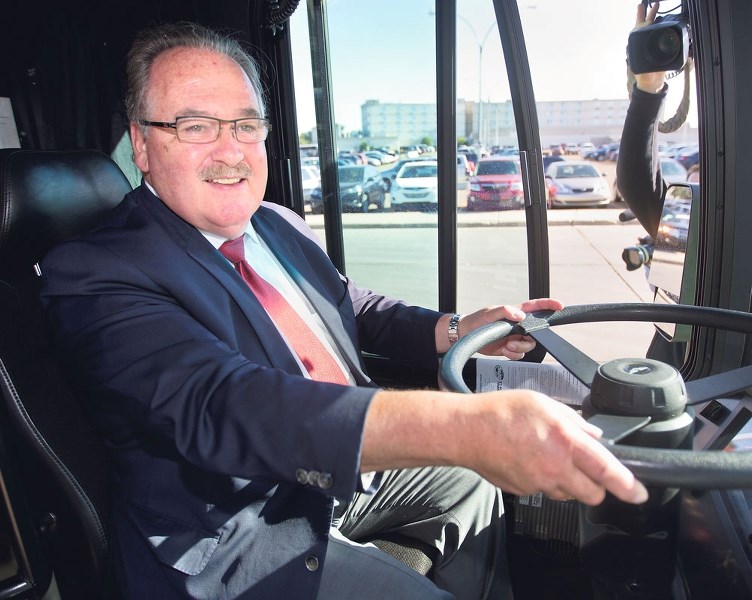While St. Albert Mayor and Capital Region Board chairman Nolan Crouse had nothing but high praise for the province on supporting a regional smart-fare system, the lack of movement on another transit project had him “flipping” his lid.
The province committed $28 million on Wednesday to developing new smart-fare technology that would eliminate the need for cash fares and paper tickets on buses and LRT and better integrate the transit systems in Edmonton, St. Albert and Strathcona County.
The hope is to create a seamless single-ticket system throughout the entire capital region, making it easier and more attractive for commuters to ditch the car.
“The integrated system will make it easier and more consistent for riders to transfer within municipal transit systems and would also encourage those who would otherwise drive to use transit instead,” said Transportation Minister Brian Mason during a press conference held at St. Albert’s Village Tree Transit Station.
But according to city officials, for transit to truly take hold in St. Albert a critical piece of infrastructure is needed: the Campbell Road Transit Centre and Park and Ride.
Bob McDonald, director of St. Albert Transit, said the smart-fare technology is only part of a multipronged approach to improve the city’s transit service and encourage a modal shift in transportation.
Along with better integration with Edmonton transit, St. Albert is looking into restructuring its local routes. A report on this will be presented to council in early October.
But the piece that will have the most impact is the creation of a new transit centre and park-and-ride facility.
“The idea is that local routes go through neighbourhoods and meet up at a common point and then people can transfer between local areas or commuter routes that will take them into the city of Edmonton,” said McDonald. “Having a transit centre makes that all possible, safe and attractive.”
Located at the planned St. Albert terminal, the transit centre would tie into the future LRT expansion. It would also better accommodate the demand for park and ride. Currently the city’s two park-and-ride locations are at capacity.
Crouse took a bit of a shot at the province during Wednesday’s announcement saying he hoped that the Village Tree Park and Ride’s days were numbered – the city plans on returning the stalls to the mall once the new transit centre is built.
While the previous government committed to funding up to 66.6 per cent of the project, the required land deal – the intended site is located in the provincially owned Transportation Utility Corridor – has been circling the bureaucratic rabbit hole for the past five years.
“They’ve given us money for the park and ride and the city’s allocated money for the park and ride, but give us the flipping land,” said Crouse in an interview. “The land is just sitting growing weeds.”
Mason told the Gazette that the initial proposal to sell the land to Edmonton, which would then sign a lease agreement with St. Albert, was met with some concerns from the finance department.
He said the province is close to finding a solution to the “accounting problem” and that he is confident the deal will occur within the next year.
The new smart-fare technology is expected to roll out in 2017 or 2018. St. Albert contributed $1.8 million to the $42-million project.
It has not yet been determined if the technology would take the form of a reloadable card, such as those used in Ottawa or the Greater Toronto Area, or if the fare could be paid using a special VISA card function.
St. Albert also received $2.1 million in GreenTRIP funding to support the purchase of four electric buses.
The $3.2-million project was approved during the last council meeting on Aug. 24, pending the receipt of provincial funds.
The buses are expected to hit the road in fall 2016 and will reduce St. Albert’s greenhouse gas emission by 100 tonnes.




